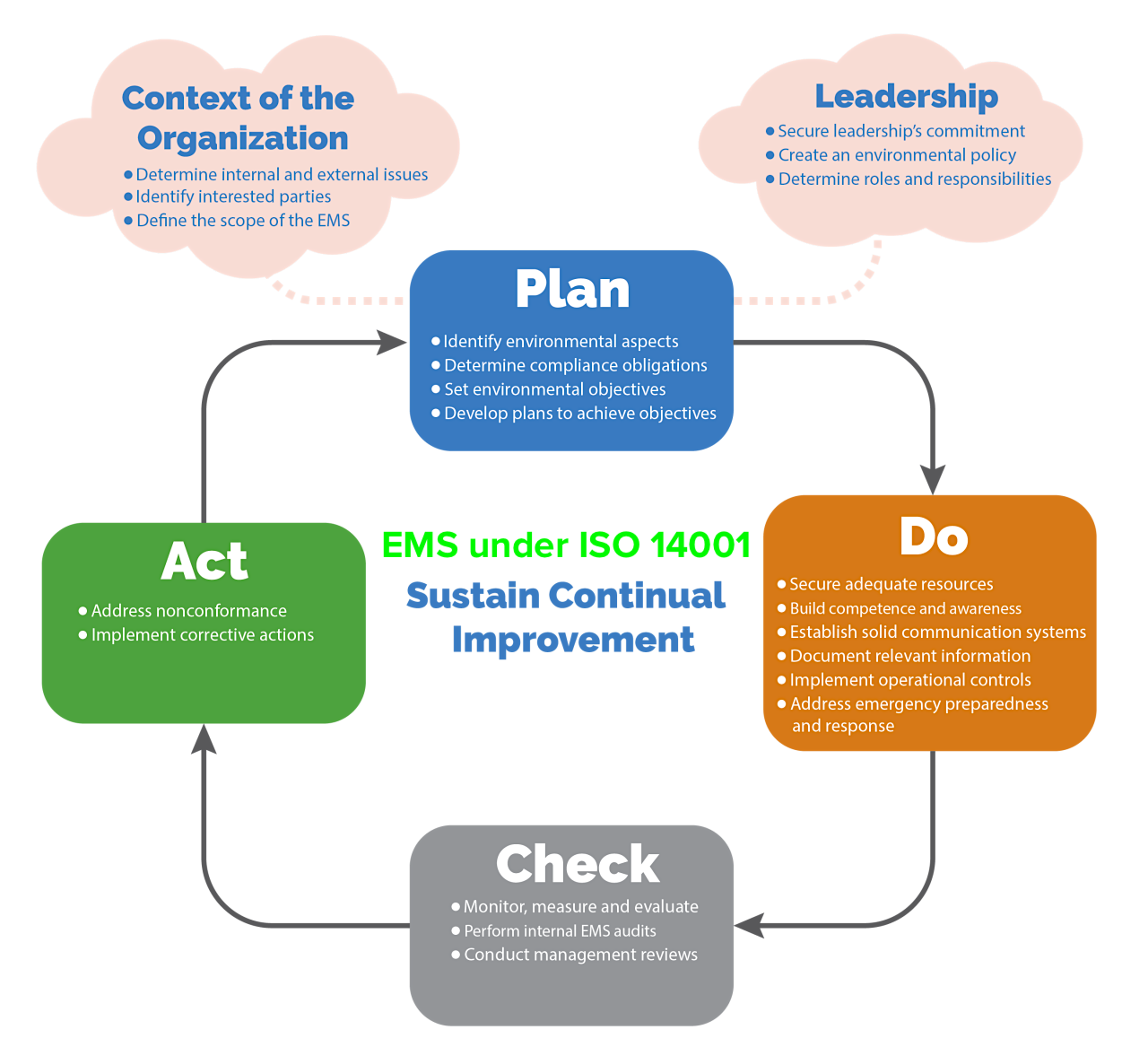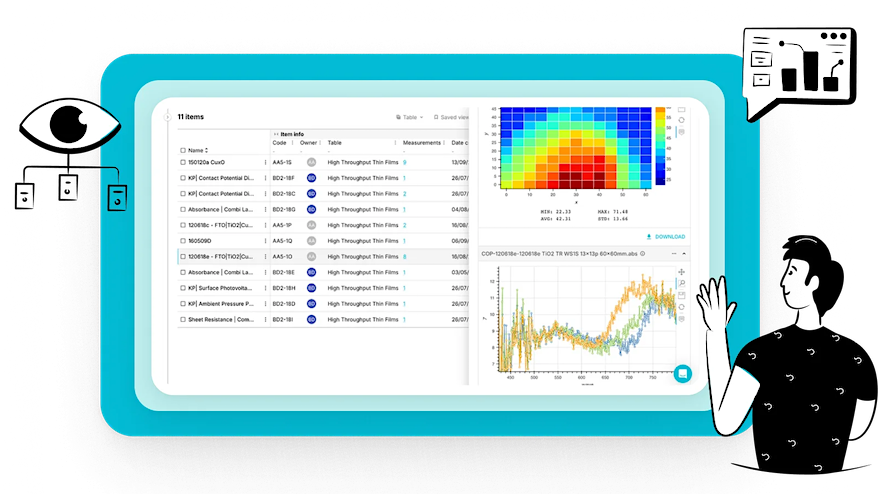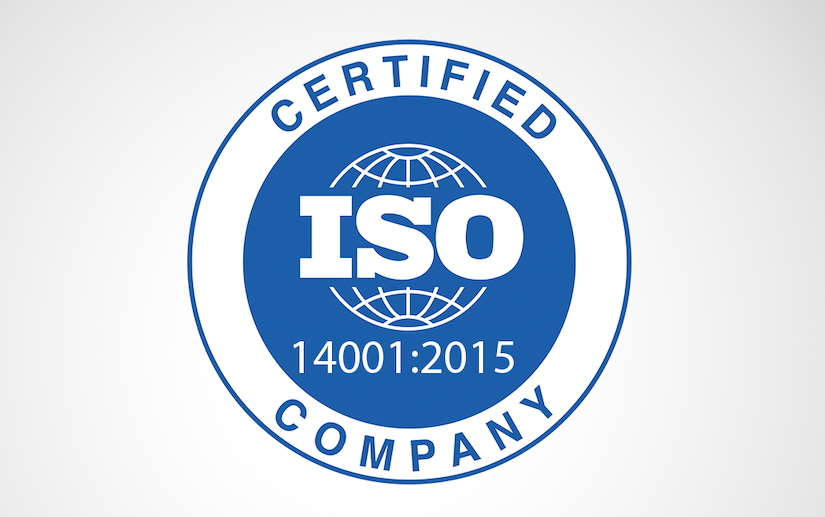ISO 14001 EMS Guide: Requirements, Benefits, and Key Aspects [XLS download]
The pressure from customer and investor expectations is mounting for materials-intensive industries. Coupled with rising regulatory standards, the push towards sustainability has become mandatory for any organization looking to optimize its supply chain. The problem? Improving environmental outcomes relies on consistent systems, which many R&D and production teams struggle to maintain.


The ISO 14001 framework provides a much-needed structure for driving environmental and operational improvement across the board. Research indicates that achieving ISO 14001 certification improves technical efficiency, including an average 2.7% increase in output in high-polluting industries.
The goal is to integrate sustainability into day-to-day operations, and a downloadable ISO 14001 EMS implementation checklist can guide you in this process.
ISO 14001: What is it, and why is it important?
ISO 14001 is an internationally recognized standard for designing and implementing an effective Environmental Management System (EMS). It provides a structured framework that organizations can follow to manage their environmental impact and compliance.
An Environmental Management System (EMS) is a set of policies and processes defining how your organization:
- Measures environmental performance.
- Fulfills compliance obligations, such as state and local environmental laws.
- Turns environmental efforts into systematic business operations.
The ISO 14001 certification process requires an accredited third-party auditor to verify that your EMS conforms to the standard, and involves:
- Stage 1 Audit: A review of your EMS documentation.
- Stage 2 Audit: A detailed on-site audit to verify that your processes are being implemented effectively.
ISO 14001 certification provides the structural foundation to meet stringent compliance requirements and meet partner expectations. Some companies use ISO 14001 to qualify suppliers, making it a valuable competitive advantage.

Who is ISO 14001 for?
While ISO 14001 is universally applicable to organizations of all sizes and sectors, it plays a critical role in materials-based industries like chemicals or food & beverage that have significant environmental impacts throughout their supply chains.
Examples of ISO 14001’s role in various sectors include:
- Chemicals: Managing emissions, hazardous waste, product toxicity, etc.
- Advanced Materials: Optimizing resource use and reducing waste in R&D and production of things like specialty substances.
- Food & Beverage/Pharmaceuticals: Addressing water and energy usage as well as waste from processes like packaging.
The ISO 14001 framework helps enable good laboratory practices as well as environmental responsibility. It reviews how resource-intensive companies can systematically reduce energy consumption in the lab, translating to less waste. Additionally, it encourages your company to consider the environmental impact of materials from extraction through use and disposal, which supports the use of sustainable processes.
Benefits of ISO 14001
ISO 14001 environmental management system compliance offers many benefits, including:
Operational Performance Benefits
- Reduced environmental impact: Allows you to systematically identify and control environmental factors, such as energy and emissions, to reduce resource consumption and enhance operational efficiency.
- Regulatory confidence: ISO 14001’s robust framework helps you fulfill compliance obligations and get assurance that you’re standing up against environmental laws.
- Data-driven oversight: Setting documented objectives and performance metrics enables you to track measurable environmental performance.

Strategic and Cultural Advantages
- Market access and reputation: Certification provides validation of your environmental stewardship, which is great for building your reputation with partners and vendors.
- Cross-functional alignment: The ISO 14001 framework standardizes procedures across teams, including R&D and production, so your organization is aligned on sustainability goals.
- Continuous improvement culture: As ISO 14001 guides you in creating a culture of constant improvement, you can implement evaluations like C-suite reviews and internal audits to stay on track with targets and prepare your organization for the future of sustainability.
Key Principles and Requirements of ISO 14001
The structure of ISO 14001 environmental management system compliance is built around the Plan-Do-Check-Act (PDCA) methodology, which is designed to drive continual improvement through proactive adjustment of your EMS strategies. Key principles of ISO 14001 include:
ISO 14001 Certification: When is it required?
While securing your ISO 14001 certification is voluntary, it is increasingly becoming an expected standard of practice in regulated and customer-facing markets. Getting the formal certification moves your EMS beyond an internal system and transforms it into a validation tool.
ISO 14001 certification is valuable for your business in several situations:
- Many large corporations and public sector organizations mandate ISO 14001 certification as a prerequisite for supplier qualification.
- A certified EMS provides a structured, auditable system demonstrating your accountability for environmental compliance.
- Environmental, Social, and Governance (ESG) performance is a major factor in investment decisions, and certification is beneficial for ESG reporting.
- In competitive bidding environments, ISO 14001 often serves as the differentiator.
10 Steps to ISO 14011 Certification
Achieving ISO 14001 environmental management system certification requires a systematic, ten-step approach aligned with PDCA:
Phase 1: Plan
1. Conduct a Gap Analysis
Compare your current environmental documentation and processes against the specific requirements of the ISO 14001 standard. Data from your R&D or production systems (e.g., resource consumption logs) can help pinpoint precise compliance and efficiency gaps.
2. Define EMS Scope and Policy
Next, you can establish the operational boundaries and physical locations the EMS will cover. Record the scope documentation and the formal policy in a centralized system like MaterialsZone for robust version control, which ensures all teams have easy access for audit review.

3. Identify Environmental Aspects and Compliance Obligations
Systematically assess all services and activities to identify their potential environmental impacts. With this information, you can determine all legal and regulatory requirements applicable to your company and goals.
Capturing this critical environmental data in standardized digital records within a centralized platform enables seamless integration with broader operational and performance data.
4. Set Measurable Objectives and Targets
This stage is about establishing specific, quantified environmental goals (e.g., “Reduce energy intensity by 5%”). You can link these environmental goals directly to operational data points collected in your centralized software, allowing for automated or near-real-time performance monitoring and tracking.
Phase 2: Do
5. Develop Documentation and Procedures
Now, you’re ready to move to the implementation phase (‘Do’). At this point, you can create controlled documents detailing how the EMS functions, including operational responsibilities and training records.
MaterialsZone’s materials informatics platform includes a collaborative Materials Knowledge Center feature that can centralize and manage all EMS-related documentation. Using it guarantees that only recent and approved procedures are used across R&D and production teams.

6. Train Staff and Implement the EMS
Educate employees on the EMS and environmental procedures, so everyone knows their role and how they can do their part to put procedures in place. A helpful tip is to use accessible, data-supported workflows within your chosen platform to promote consistency during day-to-day R&D experimentation.
Phase 3: Check and Act
7. Monitor and Measure Performance
Moving to phase 3 (‘Check and Act’) is all about reviewing your progress and amending it as necessary. The first step in achieving this is regularly collecting and analyzing data related to your objectives and operational controls.
You can use an AI-guided materials informatics platform to analyze data and flag insights to evaluate improvements in efficiency, and also to demonstrate progress towards your compliance status.
8. Conduct Internal Audits and Management Reviews
Perform planned internal audits to verify that the EMS is conforming to the ISO 14001 standard and company requirements. When the C-suite performs a review, it’s helpful for them to leverage unified data visibility across R&D and production to validate EMS effectiveness and prepare the necessary evidence for external auditors.
9. Address Nonconformities and Corrective Actions
Missteps will happen, so it’s essential to systematically identify the root causes of any nonconformances (aka system failures) and implement corrective actions. Record findings, actions, and outcomes digitally to maintain a traceable log of continual improvement, which aligns with the core principle of ISO 14001.
10. Engage a Certification Body
Once the EMS is ready to be audited, you can seek out an accredited third-party to complete the Stage 1 and Stage 2 audits. If all goes well, you’ll achieve your ISO 14001 environmental management system certification.

Leverage Data to Streamline ISO 14001 Compliance
Having an ISO 14001 environmental management system certification under your belt is a valuable tool for helping your organization secure high-stakes contracts. Using this structured, repeatable process accelerates your progress towards ESG goals and regulatory demands, all while maintaining operational efficiency.
A crucial factor when achieving ISO 14001 and similar certifications is that your EMS is only as effective as the data it relies on. Gold standard environmental management hinges on accurate data and traceable processes to facilitate cross-team collaboration.
MaterialsZone is a materials informatics platform that unifies materials and process data into one centralized, secure source. With MaterialsZone, you can unlock a Lean R&D solution that accelerates innovation and compliance using advanced data analytics and machine learning. Every environmental record stays transparent and verifiable within the platform, simplifying third-party audits like ISO 14001.
Request a demo to see how MaterialsZone’s unified platform can support your data-driven decision-making.




